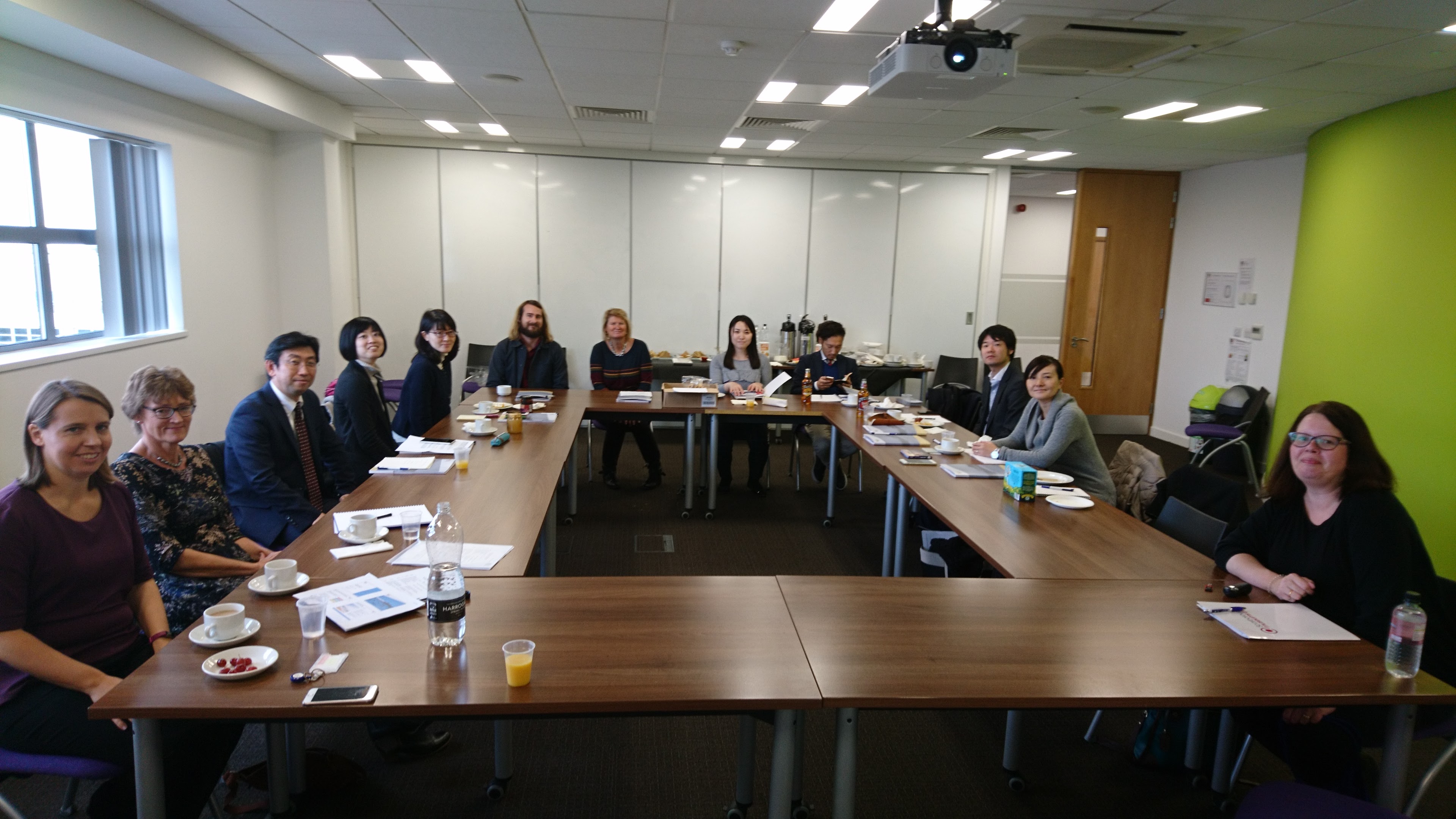
On 15 November 2017, seven Japanese staff members who had yet to complete a year at the JLGC London office visited the National Coastal Tourism Academy (NCTA) in Bournemouth for their first staff training visit. The purpose of the visit was to broaden the staff’s knowledge of best practice carried out by organisations related to local authorities, and as this year’s seconded staff all came from regions with coastlines, a study of UK coastal tourism was highly fitting.
Upon arriving at Bournemouth University Executive Business Centre where NCTA are based, the JLGC staff were warmly greeted by Academy Director Samantha Richardson and three of their key team members Jo Edom, Sheron Crossman and Alex Catt.
The morning session kicked off with a presentation from the Academy Director who gave an overview of NCTA’s work and the state of coastal tourism in the UK. Director Richardson highlighted the fact that coastal tourism is indeed growing, however the rate of growth is below the average for the tourism industry as a whole, and thus NCTA are working with local councils in coastal areas to help them thrive. The assistance from NCTA includes providing advice, best practice sharing and digital tools. An example of this is educating traditional hotels and lodges about the needs of the modern consumer, who no longer stick to one week holidays or full weekend breaks, backing up their advice with data from extensive market research. Through the promotion of best practice sharing, NCTA helps prevent multiple areas making similar mistakes and enables neighbouring regions to flourish through cooperation.
The second presentation by Academy Manager Jo Edom focused on international tourism. As with most parts of the UK, the attraction and number of tourism products in London has resulted in a low percentage of international visitors to the coastal areas. Limited visiting time and high cost of transport make up for the practical concerns for not wanting to visit the coast, however a major factor is the lack of awareness in which 44% of visitors claimed they had no knowledge of Britain’s coastline. In one of the projects to combat the situation, the team at NCTA, in conjunction with local authorities on the east coast, piloted a scheme targeting visitors from the Netherlands. Dutch visitors were specifically targeted due to access via sea routes and the Dutch making up for 10% of the overall proportion of international visitors to coastal regions. During their campaign, they trialled interactive videos which have yet to be widely used in tourism marketing, and the use of this technology combined with the campaign overall proved to have had positive results with an increase in interest in coastal attractions.
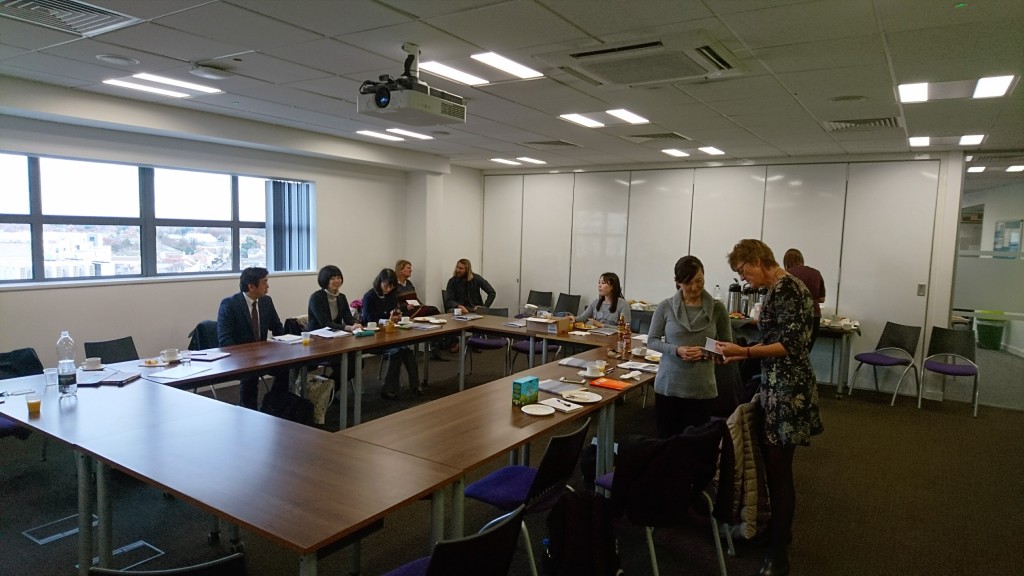
The lunch break provided an excellent opportunity for the NCTA and JLGC team members to share knowledge about local culture in the UK and Japan. During this time the group was joined by Dr Anya Chapman of Bournemouth University and the National Piers Society.
Following the break, JLGC gave a presentation on coastal tourism in the prefectures and cities that the staff are from. The presentation looked at the highlight coastal attractions in Tokushima, Tsu, Ishikawa, Aichi, Ibaraki, Tokyo and Fukushima, picking up on their problems and initiatives to combat them. The variety of success stories and challenges alien to British coastal areas caught the attention of the Bournemouth hosts, in particular Ibaraki’s Monk Fish Festival collaborating with a popular anime series and the use of mascot characters for local area promotion.
Dr Chapman then took over, giving a deep insight into the history of piers, an iconic symbol of British seaside heritage. She outlined the birth and evolution of these coastal structures, explaining how its use cases changed with the trends through the ages. Despite the deterioration and decline of piers, Dr Chapman provided some examples of pier regeneration projects, a stand out case in particular being Southport that not only brought back the pier to life, but turned the area surrounding the pier into a commercial hub.
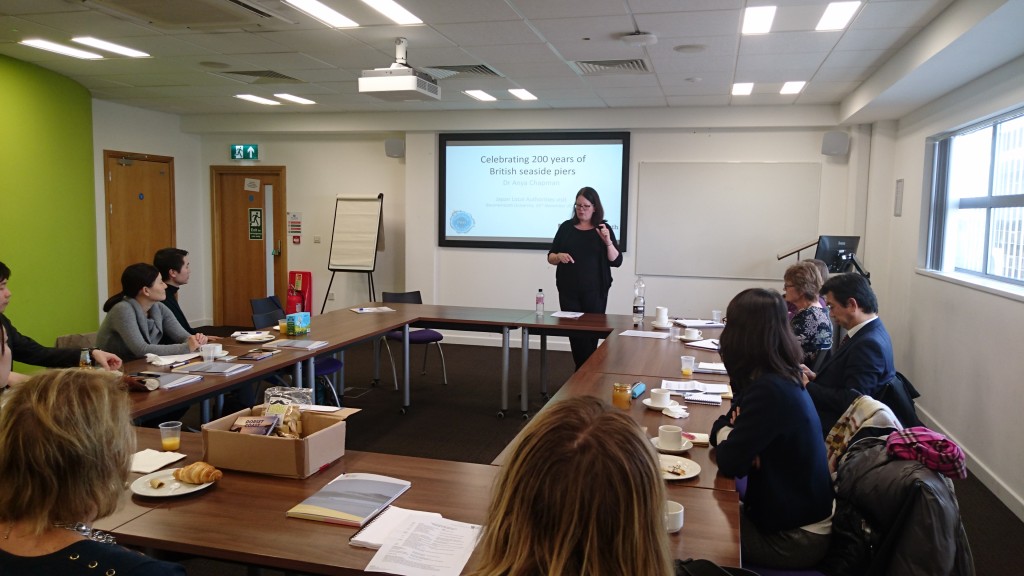
The final set of presentations were given by Mark Smith, Director of Bournemouth and Poole Tourism, and Andrew Emery of Bournemouth Tourism. Their brief presentations looked at the business and development strategies of Bournemouth and neighbouring Poole, emphasising that large scale events that offer experiences are key to retaining visitors for longer and getting them to visit again. The ground work for attracting investment laid by the council was to create spaces that would be appealing to both investors and visitors alike.
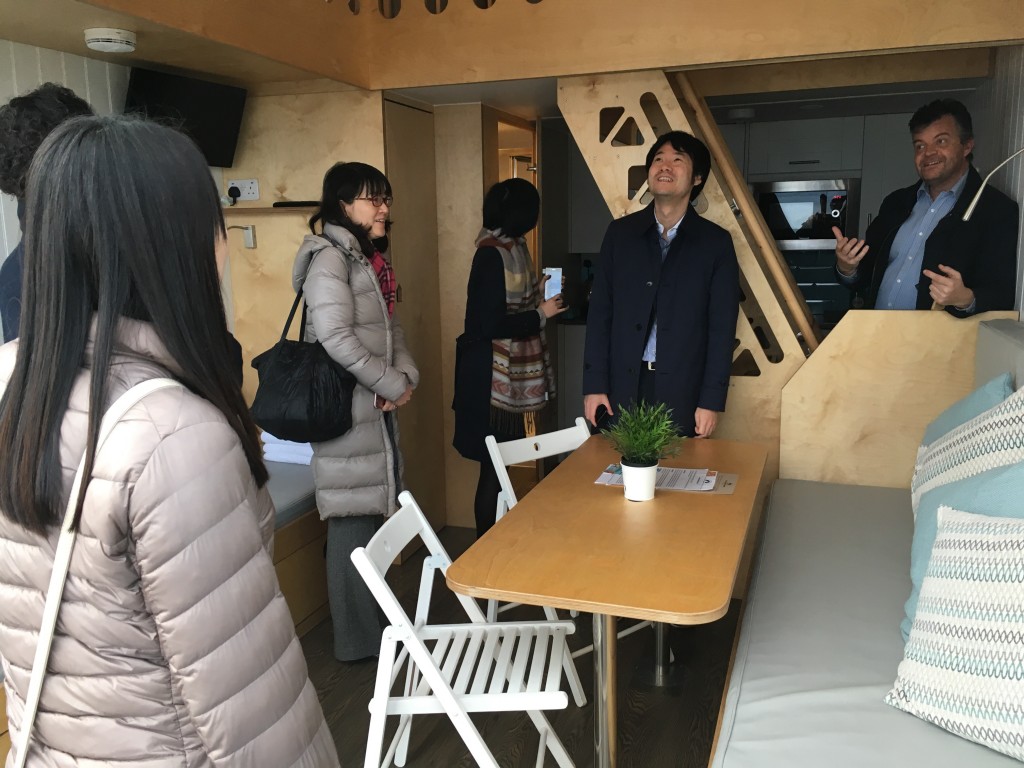
To give the JLGC team a clearer idea of the projects undertaken, Andrew Emery gave a brief tour of Bournemouth. The first area they visited was Bournemouth Beach Lodges. These lodges located several metres from the beach were opened in spring 2017, offering a compact accommodation solution for up to six guests (four adults, two children) with all of the basic needs including a shower, kitchen, toilet, fridge, TV and Wi-Fi. The level of popularity exceeded expectations and even in the chill of November still received 100% occupancy.
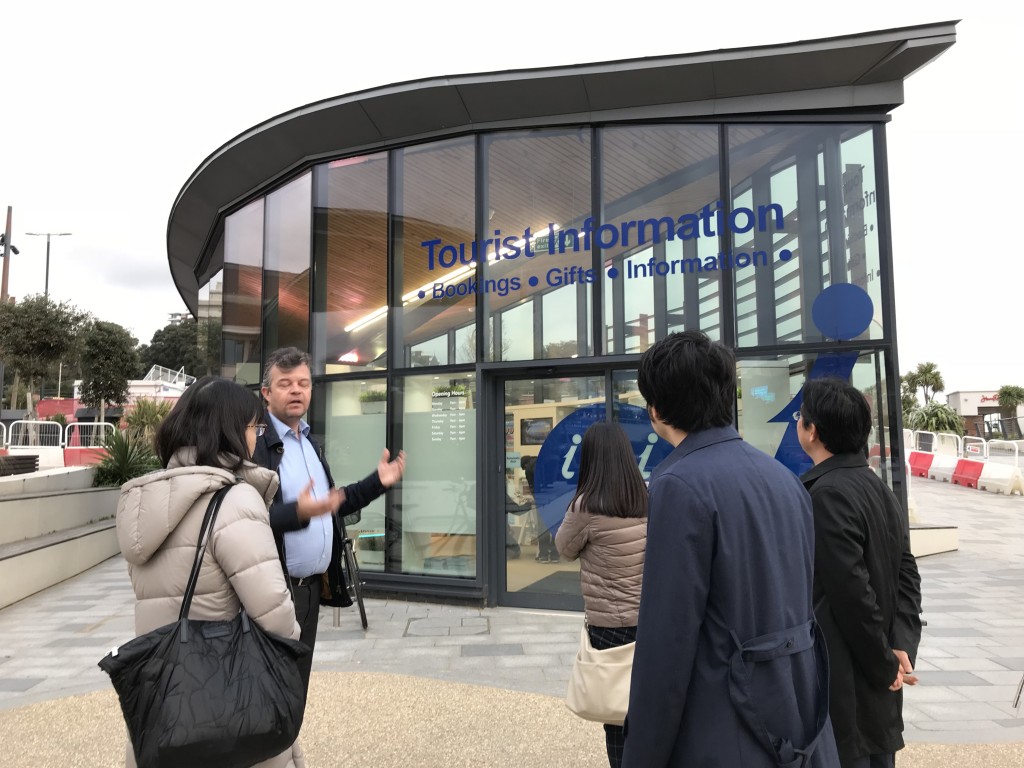
The tour was rounded off with a quick visit to the city’s landmark pier. Here the team was given an explanation about the tourist information centre that had been revamped and modernised to fit various needs.
The journey back to London gave the visiting JLGC team much to reflect about UK coastal areas. The wide range of topics covered by our Bournemouth colleagues gave them an insight into another side of the UK which will no doubt become invaluable when they eventually return to Japan.

